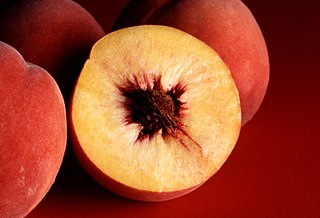The biofuel that you put in your car could one day be, quite literally, peachy. A recent survey published in Biotechnology for Biofuels presents interesting findings on the feedstock potential of endocarp drupes (stones from soft fruit).
Venugopal Mendu and colleagues report that the inedible parts of olives, black walnuts, peaches and coconuts have high lignin content, when compared to conventional feedstocks such as poplar and switchgrass. Lignin, upon conversion by fast pyrolysis into aromatic hydrocarbons, has diverse downstream applications that mirror those of fossil fuel. The high energy density and low ash content of endocarp tissue in particular, means that peach stones are cleanest to process into bio-oil.
Lignin, upon conversion by fast pyrolysis into aromatic hydrocarbons, has diverse downstream applications that mirror those of fossil fuel. The high energy density and low ash content of endocarp tissue in particular, means that peach stones are cleanest to process into bio-oil.
Processing plants for bio-oil are becoming more established, for example DynaMotive Energy Systems Corp have recently announced their co-operation in fast pyrolysis of waste materials from palm oil production. Renewable Oil International LLC have successfully piloted a mobile processing plant to harvest bio-oil from poultry litter, whilst Avello Bioenergy is building a demo plant to take a range of the more abundant woody biomass residues and energy crops.
Land-use pressure should provoke a widespread tailoring of this technology to food-production sidestreams, creating both food and fuel from the same crop.
How long will it be before we fill up our fuel tanks with fruit stones?
- Biotechnology for a bio-based economy - 5th June 2019
- Sustainable energy at the American Chemical Society Spring meeting - 11th April 2018
- Biotechnology for Biofuels – Special Issue on Life Cycle Analysis - 17th May 2017
Comments